From basic techniques to advanced projects, explore the art of Polymer Clay Creations with our comprehensive guide. Learn how to sculpt lifelike figures, design captivating jewelry pieces, and create intricate patterns and textures.
With this guide, you’ll master the skills and techniques needed to create professional-looking Polymer Clay Creations that stand out.
So, grab your tools and unleash your imagination. With Polymer Clay Creations, anything is possible.
Key Takeaways:
- Polymer Clay Creations offer endless opportunities for creativity and self-expression.
- With this guide, you’ll learn basic techniques and advanced skills to create stunning art pieces, sculptures, and jewelry designs.
- Mastering Polymer Clay Creations takes patience, practice, and a willingness to experiment with different techniques and materials.
- With the right tools and materials, you can unleash your imagination and bring any idea to life with Polymer Clay Creations.
- Don’t be afraid to push your limits and challenge yourself with advanced projects. The joy of creating with Polymer Clay is unmatched.
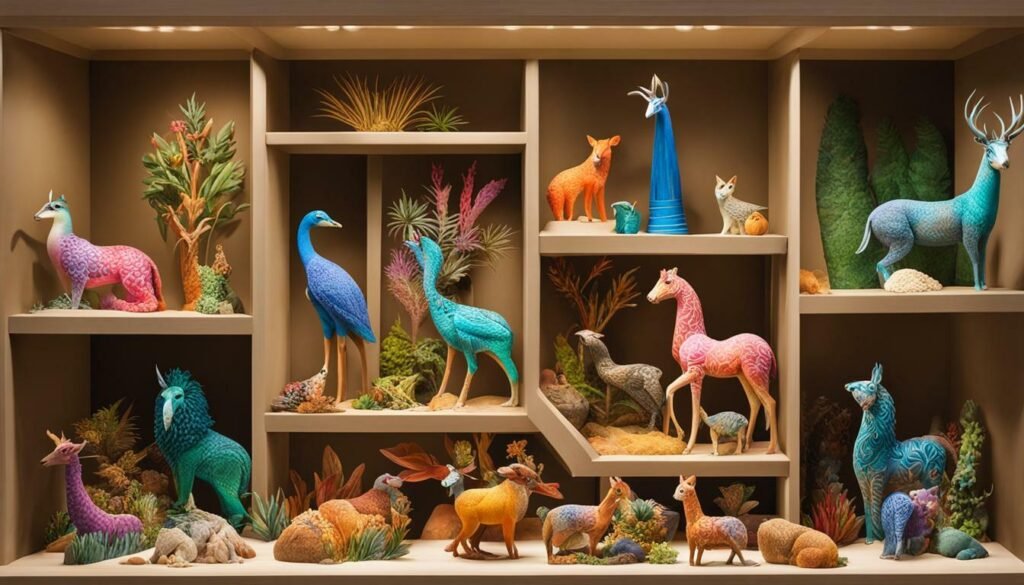
Getting Started with Polymer Clay
Welcome to the world of polymer clay art! If you’re new to this craft, don’t worry—getting started is easy and fun. Just follow these basic steps:
Step 1: Choose Your Polymer Clay
There are many types of polymer clay available on the market, each with its unique characteristics. Some popular brands include Fimo, Sculpey, and Kato Polyclay. Choose a brand that suits your needs and budget.
- Soft and pliable – Easy to shape and manipulate
- Firm – Best for detailed work and carving
- Flexible – Ideal for creating jewelry and other wearable items
Once you’ve picked your clay, it’s time to gather the essential tools and materials.
Step 2: Get Your Tools and Materials
You’ll need some basic tools and materials to start your polymer clay project:
- Clay cutters – For shaping and cutting the clay
- Sculpting tools – For adding details and texture to your clay art
- Oven – To bake the finished clay project
- Work surface – A clean, smooth, flat surface is perfect for working with clay
- Cornstarch or baby powder – To keep the clay from sticking to your hands and tools
Step 3: Learn Basic Techniques
Now that you have your clay and tools, it’s time to learn some basic techniques! Here are a few to get you started:
- Conditioning – Warming up the clay by kneading it to make it more pliable
- Sculpting – Adding dimension and detail to your clay piece
- Baking – Following the manufacturer’s instructions to bake and harden the clay
There are many tutorials and courses available online that can help you learn more advanced techniques, so don’t hesitate to explore and experiment with your clay art.
Now that you have the basics, you’re ready to start creating some polymer clay art! With a little practice and some imagination, the possibilities are endless. Have fun and let your creativity soar!
Exploring Polymer Clay Sculpture
Creating with polymer clay is a versatile and fun experience that can lead to endless possibilities, especially when entering into the world of sculpture. Sculpting with polymer clay allows you to create lifelike figures or imaginative sculptures that are perfect for expressing your creativity.
Polymer clay sculpture is not only enjoyable, but it is also an affordable art form. It’s a great way to experiment with different techniques and materials, while still producing outstanding results. With polymer clay, you can create sculptures with intricate details that are hard to achieve with other mediums.
To start your sculpting journey, you need to familiarize yourself with the necessary tools and techniques. The most common tools used in polymer clay sculpture include a pasta machine, a heat gun, a sculpting knife, and a set of sculpting tools. Polymer clay techniques such as cane making, creating textures and patterns, and color mixing will also be helpful in creating unique sculptures.
- Start with a basic shape and build upon it. Don’t be afraid to experiment with different shapes and sizes.
- Using sculpting knives and tools, carve out the details of your sculpture, such as hair, wrinkles, and clothing details.
- For a more realistic look, try adding texture to your sculpture. Use materials such as sandpaper or fabric to create patterns.
- When it comes to curing your sculpture, follow the manufacturer’s instructions and be sure to cure the sculpture fully.
- Lastly, don’t forget to add personal touches to your sculptures. Whether it’s adding a signature or incorporating unique details, make each piece your own.
With these tips and techniques in mind, you can start creating beautiful polymer clay sculptures that showcase your imagination and creativity.
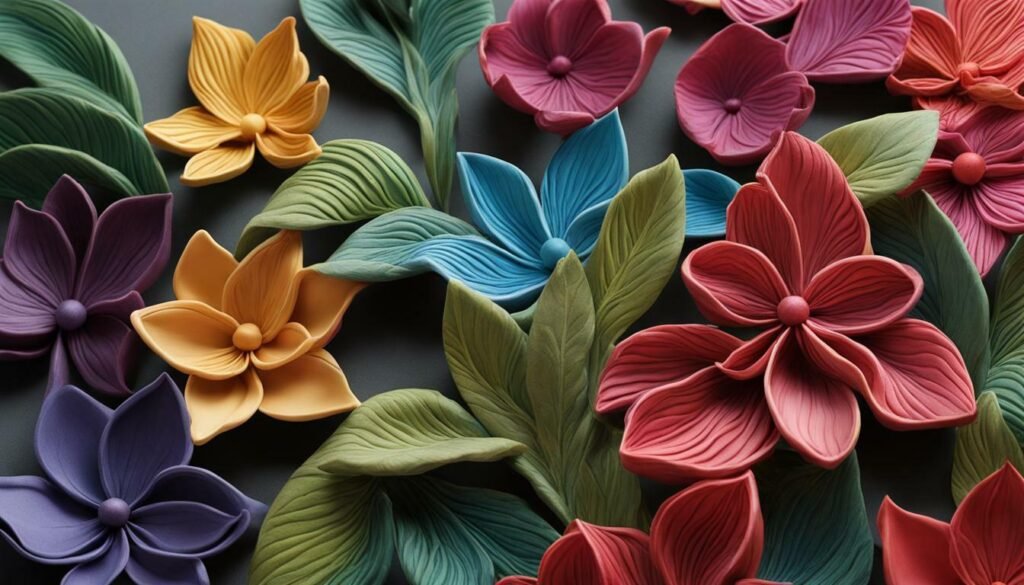
Polymer clay sculpture is a fantastic way to experiment with different techniques and materials while still producing stunning results. With a little creativity and practice, you can achieve amazing results and bring your ideas to life. Don’t be afraid to try new things and push your limits with this versatile medium.
Crafting Polymer Clay Jewelry
Looking for a unique and personalized accessory to add to your jewelry collection? Polymer clay jewelry is a great option! With endless possibilities for design and customization, you can craft pieces that reflect your personal style and taste.
Polymer Clay Techniques for Jewelry Making
Before you start crafting your polymer clay jewelry, it’s important to become familiar with some basic techniques:
- Conditioning: To make your polymer clay moldable, you need to condition it by kneading it until it’s soft and pliable.
- Rolling: A pasta machine or roller can help you flatten your clay to a consistent thickness.
- Cutting: Use a blade or cookie cutter to cut the clay into your desired shapes and sizes.
- Baking: Follow the instructions on your clay package to bake your finished pieces in the oven.
Once you’ve mastered these basic techniques, you can start experimenting with more advanced ones, such as creating texture or adding layers of color.
Designing Your Polymer Clay Jewelry
The beauty of polymer clay jewelry is that it’s completely customizable. Whether you prefer delicate, minimalist pieces or bold, statement jewelry, you can create it with polymer clay.
- Color: Mix different hues of polymer clay to create unique color combinations.
- Pattern: Use stamps or texture plates to create interesting patterns and designs on your jewelry.
- Shape: Experiment with different shapes and sizes to create one-of-a-kind jewelry pieces.
- Details: Add beads, charms, or other embellishments to your jewelry for extra detail and visual interest.
Remember, the possibilities are endless when it comes to creating polymer clay jewelry. Don’t be afraid to let your imagination run wild!
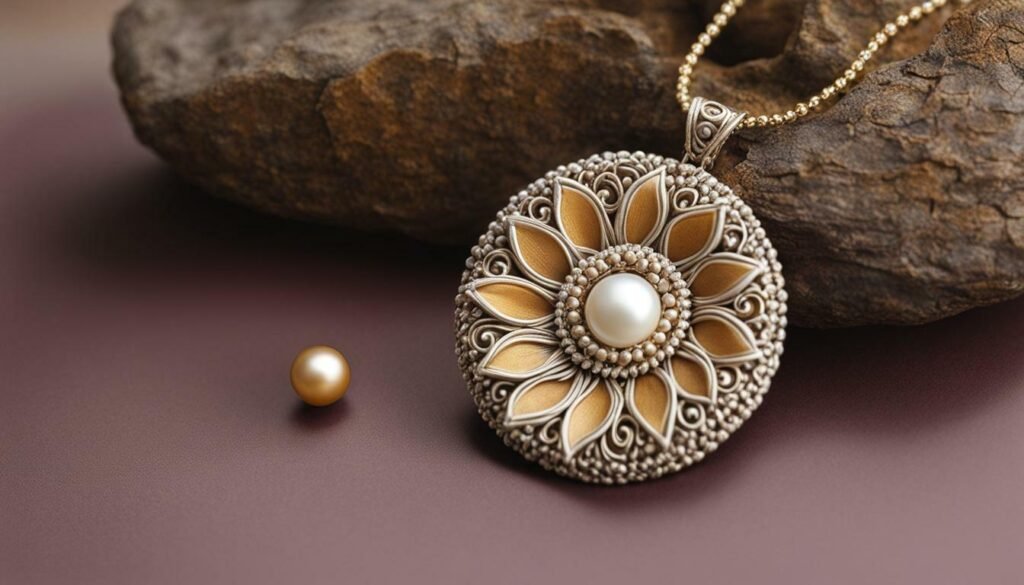
Whether you’re a beginner or an experienced crafter, polymer clay jewelry is a fun and versatile craft to explore. So why not give it a try?
Mastering Polymer Clay Techniques
Want to take your polymer clay creations to the next level? By mastering advanced polymer clay techniques, you can achieve more complex designs and textures and create professional-looking results. Here are some tips:
- Experiment with texture techniques like stamping, carving, and impressing to add depth and dimension to your pieces.
- Try color blending and shading techniques to create smooth, gradient effects that add interest to your designs.
- Explore the possibilities of surface techniques, such as using mica powders and alcohol inks, to create unique finishes and effects on your pieces.
- Learn advanced techniques like caning and sculpting to create intricate designs and lifelike figures.
- Practice working with different types of polymer clay, such as translucent or glow-in-the-dark varieties, to create unique and striking effects.
There are endless techniques to explore with polymer clay, so don’t be afraid to experiment and try new things. You can find tutorials and resources online or in books to help you learn and master different techniques.
It’s also helpful to practice regularly and be patient with yourself. Don’t expect to master advanced techniques overnight – it takes time and practice to develop the skills and muscle memory needed to create complex designs.
Remember to have fun and enjoy the process of learning and creating. Polymer clay is a versatile and rewarding medium, and with practice, you can achieve incredible results.

- Online tutorials and courses on websites like YouTube and Skillshare
- Polymer clay books and guides, such as “The Polymer Clay Techniques Book” by Sue Heaser or “Polymer Clay Art Jewelry” by Ilysa Ginsburg and Kira Slye
- Online communities and forums, such as the Polymer Clay Central forum, where you can connect with other polymer clay enthusiasts and share tips and advice
Exploring Polymer Clay Crafts
Get ready to unleash your creativity with polymer clay crafts! Whether you’re crafting home decor items or creating custom gifts, the possibilities are endless with this versatile medium. Here are some ideas and tips to help get you started:
- Start with simple projects like making colorful beads or small figurines.
- Experiment with different textures and surface techniques like stamping, carving, or embossing.
- Combine polymer clay with other materials like wood, metal, or fabric to create unique mixed-media pieces.
- Create personalized home decor items like coasters, planters, or candle holders.
- Craft one-of-a-kind gifts like keychains, bookmarks, or picture frames.
Remember, when working with polymer clay crafts, it’s important to be patient and take your time. Here are some tips to keep in mind:
- Start with neutral or primary colors to make color blending easier.
- Use a dedicated workspace and keep your tools and materials organized.
- Use a clay conditioning machine or pasta roller to soften and condition your clay for easier handling.
- Bake your creations according to the instructions on the clay packaging to ensure proper curing.
- Experiment with different types of polymer clay to see which ones work best for your projects.
Looking for inspiration for your next polymer clay craft project? Take a stroll through a craft store or browse online for ideas. You can also check out social media platforms like Instagram or Pinterest for inspiration. Whatever you choose to create, enjoy the process and have fun!
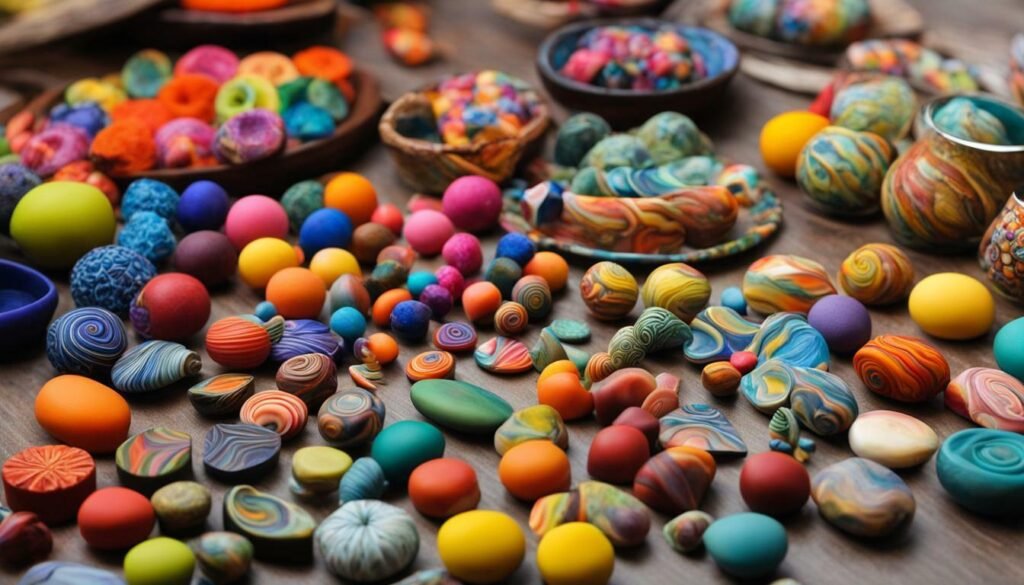
With these tips and ideas, you’ll be on your way to creating stunning polymer clay crafts in no time. Whether you’re a beginner or an experienced crafter, polymer clay offers endless possibilities for your creative projects.
Creating Stunning Polymer Clay Designs
Designing with polymer clay is a fascinating art form that allows you to create unique and captivating designs. Whether you are a beginner or an advanced artist, here are some tips to help you craft stunning polymer clay designs:
- Experiment with different polymer clay techniques to create unique patterns and textures.
- Use a variety of shapes and sizes of polymer clay to create interesting designs.
- Blend different colors of polymer clay to make unique color combinations that will make your designs stand out.
- Try using a variety of tools and stamps to add textures and details to your designs.
- Use contrasting colors to highlight details in your designs.
Some popular designs to try with polymer clay include intricate mandalas, beautiful floral patterns, and geometric shapes. The possibilities are endless when it comes to creating stunning polymer clay designs.
Don’t be afraid to get creative and experiment with different techniques and designs. With polymer clay, there are no limits to what you can create.

Looking for inspiration for your next polymer clay design? Look no further than your own imagination. Other sources of inspiration include:
- Nature: flowers, leaves, trees, animals, and landscapes can all inspire beautiful polymer clay designs.
- Art: explore different art styles and periods to spark your imagination and inspire new ideas.
- Patterns: look for interesting patterns in everyday objects, such as tiles, fabrics, and wallpapers, to create unique designs.
There are endless possibilities for design inspiration with polymer clay. Keep an open mind and let your creativity guide you.
Polymer Clay Tutorials for Beginners
If you’re new to polymer clay, don’t worry. Even if you don’t consider yourself an artist, with the right guidance and patience, you can create beautiful polymer clay projects. Here are some tutorials to get you started:
- Polymer Clay Jewelry: Make your own unique jewelry pieces with polymer clay. From textured earrings to statement necklaces, the possibilities are endless.
- Polymer Clay Figures: Learn how to sculpt polymer clay figures with step-by-step instructions. Start with simple shapes like hearts and stars, and work your way up to more complex designs.
- Polymer Clay Home Decor: Create custom home decor items with polymer clay. From planters to coasters, this tutorial will show you how to add a personal touch to your living space.
Remember, it’s okay to experiment and make mistakes. Polymer clay is a forgiving medium that can be easily shaped and reworked. Don’t be afraid to try new techniques and let your creativity run wild.
Looking for more inspiration? Check out online tutorials and videos to find even more ideas and projects. You can also join online communities and forums to connect with other polymer clay enthusiasts and get feedback on your creations.

- Start with simple projects and gradually work your way up to more complex designs.
- Invest in quality materials and tools. This will make a huge difference in the final result of your polymer clay projects.
- Follow instructions closely, but also feel free to experiment with different techniques and colors.
- Be patient and take your time. Polymer clay projects can be time-consuming, but the end result is worth it.
- Enjoy the process and have fun with your creations!
Whether you’re making jewelry, home decor items, or sculptures, polymer clay is a versatile and rewarding medium. With these tutorials and tips, you’ll be on your way to creating beautiful polymer clay projects in no time.
Advanced Polymer Clay Projects
Congratulations on mastering basic polymer clay techniques! It’s time to take your creativity to the next level with advanced projects that will challenge and inspire you.
1. Millefiori Canes
Create intricate patterns and designs by making millefiori canes. These canes are made by layering different colors of polymer clay and then reducing them into a long and thin shape. You can then slice the cane to reveal the unique design inside and use it to decorate various projects such as jewelry, home decor items, and more.
- Start with a simple design such as stripes or dots and work your way up to more complex designs such as flowers or animals.
- Experiment with different color combinations to create unique and one-of-a-kind designs.
- Use a sharp blade or a millefiori slicer to ensure clean and even slices.
2. Polymer Clay Veneers
Create stunning patterns and textures by making polymer clay veneers. These veneers can be used to cover various surfaces such as wood, metal, glass, and more. You can use them to create jewelry, home decor items, or even custom phone cases.
- Experiment with different techniques such as layering, stamping, and texture plates to create unique and personalized designs.
- Use a pasta machine or a roller to ensure even thickness and avoid air bubbles.
- Apply the veneer to the surface using a strong adhesive such as E6000 or super glue.
3. Sculptural Techniques
Push your sculpting skills to new heights by experimenting with advanced techniques and materials. Create lifelike figures or imaginative sculptures that will leave people in awe.
- Use armatures to create a stable structure for your sculpture and prevent it from collapsing or deforming.
- Create realistic skin texture by using tools such as silicone shapers and ball styluses.
- Experiment with other materials such as wire, fabric, and found objects to add dimension and interest to your sculpture.

Remember, the key to advancing your polymer clay skills is to keep practicing and experimenting. Don’t be afraid to make mistakes and try new things. You never know what amazing creations you might come up with.
Finding Inspiration for Polymer Clay Creations
If you’re feeling uninspired and struggling to come up with ideas for your next polymer clay project, don’t worry, you’re not alone. Below are some tips and tricks to help you find inspiration:
- Take a walk in nature and observe the colors, textures, and shapes around you.
- Look through art books, magazines, and online galleries to get ideas.
- Think about your favorite things, such as animals, plants, or hobbies, and incorporate them into your designs.
- Experiment with different color combinations and patterns.
- Look to other polymer clay artists for inspiration. Check out their designs and techniques on social media platforms like Instagram or Pinterest and incorporate elements that inspire you.
Remember, inspiration can come from anywhere. Keep an open mind and stay curious.
Experimenting with Polymer Clay Ideas
Once you have some inspiration, it’s time to start experimenting with polymer clay ideas:
- Begin with simple shapes and designs, and gradually work your way up to more complex ones.
- Play around with different techniques, such as texture and surface techniques, to create unique designs.
- Take risks and try new things. Don’t be afraid to make mistakes; they can often lead to new and unexpected ideas.
- Stay organized by keeping track of your ideas and designs. Use a notebook or a digital planner to record your progress, sketch out new ideas, and keep track of your supplies.
Remember, creativity is about exploration and experimentation. Allow yourself to make mistakes and try new things, and you’ll be surprised at what you can create.
Sharing Your Polymer Clay Projects
Finally, once you’ve completed your polymer clay projects, it’s time to share them with the world:
- Take high-quality photos of your creations in natural light to showcase their details and colors.
- Create a portfolio or an online shop to showcase and sell your work. Websites like Etsy or Shopify make it easy to set up an online store.
- Share your work on social media platforms like Instagram or Facebook, using hashtags to reach a larger audience.
- Collaborate with other artists and participate in craft fairs to get your work seen by a wider audience.
Sharing your work can be intimidating, but it’s also a crucial part of the creative process. Don’t be afraid to put yourself out there and show the world what you can do.
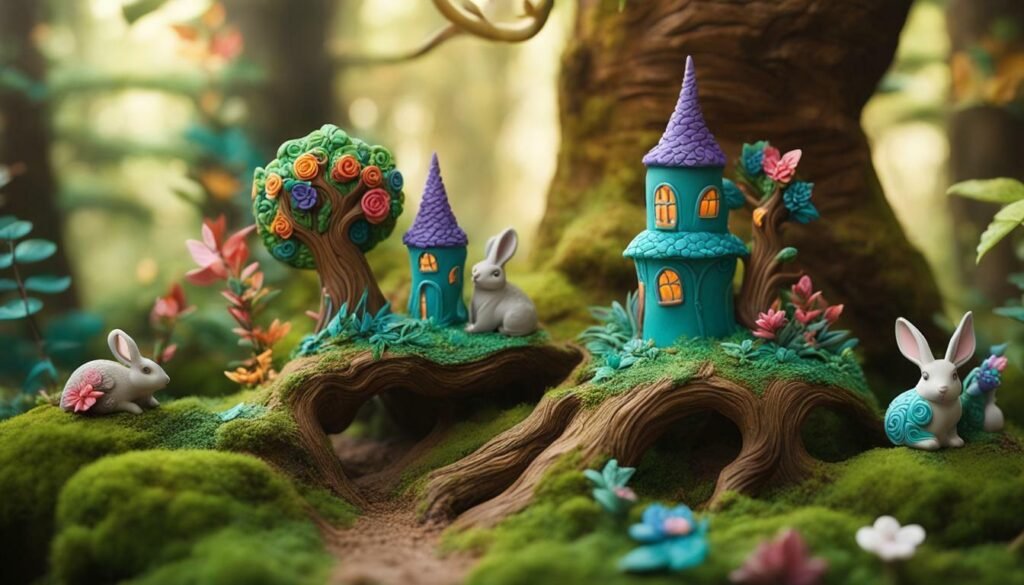
Now that you’ve created stunning polymer clay art, it’s time to showcase it to the world! Here are some tips and ideas to effectively display and promote your work:
- Photograph your creations in natural light to show their true colors and texture. Use a simple backdrop, such as a sheet of paper or fabric, to keep the focus on your art.
- Create a portfolio or online gallery to showcase your work. You can use social media platforms like Instagram or create your own website to display your creations.
- Participate in craft fairs, art festivals, or local events to connect with potential customers and showcase your polymer clay art in person.
- Collaborate with other artists or craftspeople to create unique pieces that combine different mediums or techniques. This can help expand your audience and introduce your work to new markets.
Remember to always credit your work and promote it using relevant keywords, such as “polymer clay art,” “polymer clay designs,” and “polymer clay projects” to increase its visibility online.
Take Inspiration from Others
Looking for more inspiration? Check out other polymer clay artists and crafters online. You can join Facebook groups, follow Instagram accounts, or browse online marketplaces to see what others are creating with polymer clay.
Take note of what catches your eye and use it as inspiration for your own creations. You can also reach out to other artists for advice, feedback, or collaboration opportunities.
Share Your Passion for Polymer Clay
Don’t be afraid to share your passion for polymer clay with others. You can teach workshops, create tutorials, or even start a blog to share your knowledge and inspiration with others.
By sharing your passion and creativity with others, you can help grow the polymer clay community and inspire others to try this unique and versatile art form.

Remember, showcasing your polymer clay art takes time and effort, but the rewards are worth it. Keep creating, sharing, and promoting your work, and you’ll soon develop a loyal following of fans and customers who appreciate your unique and beautiful creations.
Troubleshooting Common Polymer Clay Issues
Working with polymer clay can be a rewarding experience, but it’s not always without its challenges. If you encounter issues during the creation process, don’t fret! Here are some common problems and how to troubleshoot them:
- Cracking: If your polymer clay creation cracks after baking, it may be due to insufficient conditioning. Try conditioning your clay longer to ensure it is soft and pliable before sculpting. Additionally, make sure you use an oven thermometer to ensure your oven temperature is accurate.
- Curing: If your polymer clay creation doesn’t seem to be fully cured, it may be due to insufficient baking time or temperature. Follow the manufacturer’s instructions carefully, and use an oven thermometer to ensure a consistent temperature throughout the baking process.
- Texture: If you’re having trouble achieving the desired texture in your polymer clay creation, try experimenting with different tools, such as stamps, textures sheets, and even household items like toothpicks and pencils.
- Surface Finish: If your polymer clay creation has an uneven or dull surface finish, it may be due to improper sanding or finishing. Make sure to sand your piece with progressively finer grits of sandpaper, and polish it with a soft cloth or buffing machine for a shiny finish.
Remember, polymer clay is a forgiving medium. Don’t be afraid to experiment and try new techniques until you achieve the desired results.
Further Resources for Troubleshooting Polymer Clay Issues
If you’re still having trouble with your polymer clay creations, there are many resources available to help. Here are some helpful polymer clay tutorials and resources:
- Polymer Clay Basics: Troubleshooting – a video tutorial by Polymer Clay TV that covers common issues and how to fix them.
- Troubleshooting Polymer Clay Problems – an article by ThoughtCo that covers common problems and solutions.
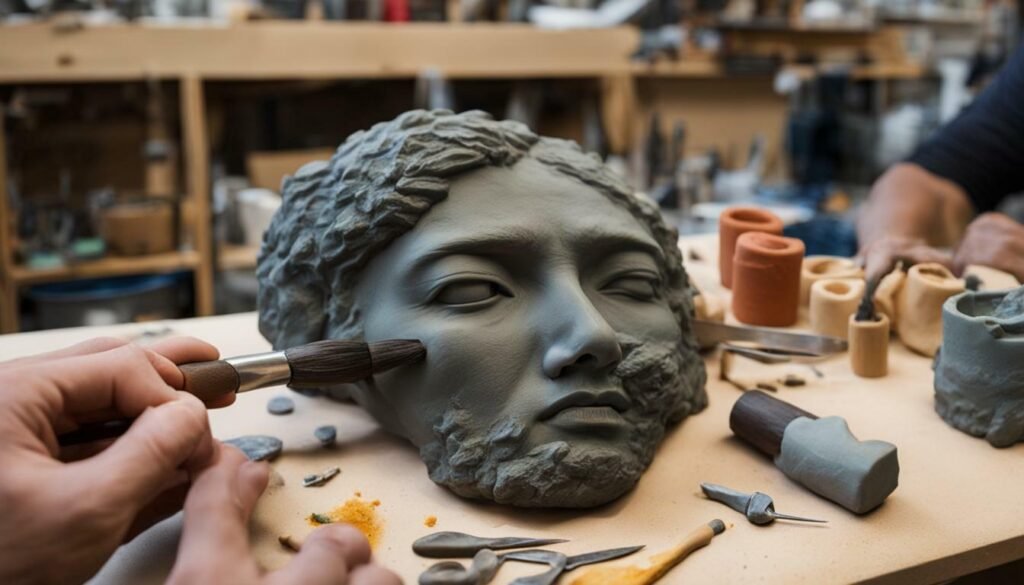
With these troubleshooting tips and resources, you’ll be well on your way to creating beautiful polymer clay creations free of common issues. Don’t let challenges hold you back from exploring all the possibilities of this versatile and rewarding medium. Keep experimenting, keep creating, and enjoy the journey!
The Joy of Polymer Clay Creations
There’s no denying the immense satisfaction that comes with creating something from scratch. This is especially true when it comes to Polymer Clay Creations. Whether you’re looking to create stunning jewelry pieces, imaginative sculptures, or unique home decor items, the possibilities are endless.
With polymer clay, you can unleash your creativity and let your imagination run wild. This versatile medium can be molded and shaped into just about anything you can think of, making it a perfect choice for artists and crafters of all skill levels.
- Create unique and personalized jewelry pieces with polymer clay beads and pendants
- Sculpt lifelike figures or imaginative sculptures with the use of basic tools and techniques
- Design and craft custom home decor items, holiday decorations, and gifts
The beauty of Polymer Clay Creations lies in the ability to manifest your ideas into tangible, beautiful works of art. With just a few basic tools and techniques, anyone can experience the joy of working with polymer clay.
There’s no limit to what you can create with Polymer Clay Creations. From intricate designs and patterns to bold and vibrant color schemes, the possibilities are truly limitless.
So what are you waiting for? Start your Polymer Clay Creations journey today and experience the joy and satisfaction that comes with creating something truly unique and beautiful.
FAQ
Q: What is polymer clay?
A: Polymer clay is a type of modeling clay that is primarily composed of PVC (polyvinyl chloride) particles suspended in a plasticizer. It is commonly used for creating sculptures, jewelry, and various crafts due to its versatility and ability to hold intricate details.
Q: Where can I buy polymer clay?
A: Polymer clay can be purchased at arts and crafts stores, online retailers, and specialized polymer clay suppliers. Some popular brands include Sculpey, Fimo, and Premo. Make sure to check the availability and selection at your local stores or browse the options online.
Q: Is polymer clay safe to use?
A: Polymer clay is generally safe to use, but it’s important to follow safety precautions. Avoid contact with bare skin for prolonged periods, as some people may develop sensitivities or allergies. Use proper ventilation when baking polymer clay, as the fumes emitted can be harmful. Always read and follow the instructions provided by the manufacturer.
Q: How do I condition polymer clay?
A: Conditioning polymer clay involves softening it by kneading and manipulating it until it becomes pliable and easy to work with. To condition polymer clay, start by warming it up in your hands, then fold and twist it repeatedly. You can also use a pasta machine or a dedicated clay conditioning machine to expedite the process.
Q: How do I bake polymer clay?
A: Polymer clay should be baked according to the instructions provided by the manufacturer. Typically, it is baked in a preheated oven set at a specific temperature (usually between 230°F and 275°F) for a designated amount of time (typically 15-30 minutes per 1/4 inch of thickness). Place the clay on a baking sheet or a dedicated ceramic tile and monitor the baking process to prevent overbaking or burning.
Q: Can I mix different colors of polymer clay?
A: Yes, you can mix different colors of polymer clay to create custom shades and blends. Knead the colors together until they are well combined, giving you a new color. Experiment with different ratios and combinations to achieve the desired results. Keep in mind that some colors may require more kneading than others to achieve a smooth and consistent blend.
Q: How can I add texture to my polymer clay creations?
A: There are various ways to add texture to polymer clay creations. You can use tools like texture sheets, stamps, or even household items like toothbrushes or fabric to create interesting patterns and textures. Press the chosen texture into the clay before or after shaping it, depending on the desired effect. Experiment with different tools and techniques to achieve unique textures.
Q: How can I avoid fingerprints on my polymer clay projects?
A: To avoid fingerprints on your polymer clay projects, ensure that your hands are clean and free of oils before handling the clay. You can also wear disposable gloves or use a barrier cream to prevent oils from transferring onto the clay. If fingerprints do appear, you can gently smooth them out using a soft brush or a clay smoothing tool.
Q: Can I paint my polymer clay creations?
A: Yes, you can paint your polymer clay creations after they have been baked and fully cooled. Various types of paints, such as acrylics or alcohol inks, can be used to add color and detail to your projects. Make sure to seal the paint with a clear varnish or glaze to protect the finish and enhance the longevity of your artwork.
Q: How can I store my polymer clay?
A: To store your polymer clay, keep it in an airtight container or ziplock bag to prevent it from drying out. Store it away from direct sunlight and extreme temperatures, as heat can cause the clay to become soft or even cure prematurely. If your clay becomes too hard, it can be reconditioned by kneading and warming it up in your hands.
